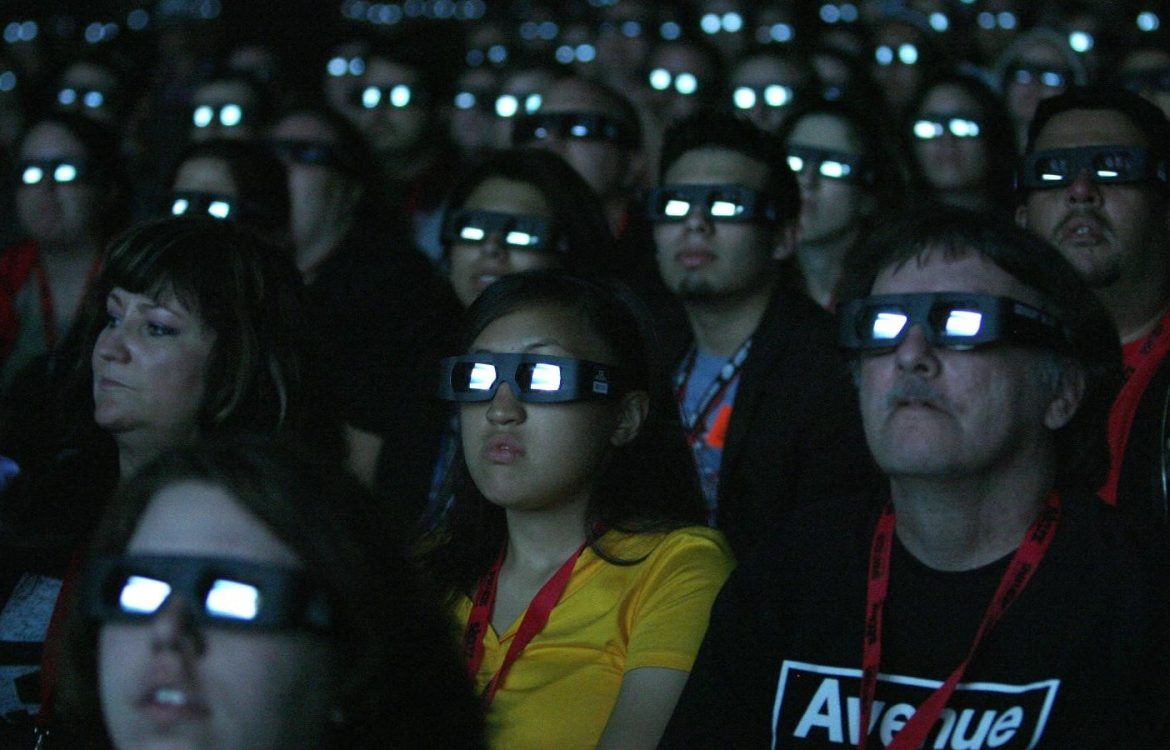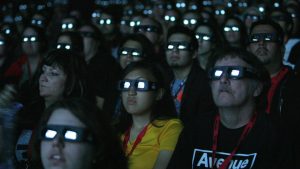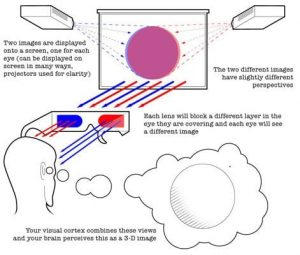
3D Movies: An introduction – Lokesh Bhatta
Movies have always been a major source of entertainment and refreshment for us. Visuals shown in movies make us emotionally attached to them, which makes us feel whatever is shown is all real. To enhance this rich experience, the concept of 3D was introduced. 3D films are motion pictures that use special glasses to provide a sense of three-dimensional solidity to the audience.
The Power of Love, which opened at the Ambassador Hotel Theater in Los Angeles on September 27, 1922, was the first confirmed 3D picture presented to an out-of-house audience. Since then, a lot of progress has been made in the making of 3D pictures throughout the decades. Avatar, a 3D movie released in 2009, took the movie industry by storm with its box office collection. The film, which was made with a budget of $237 million, made a worldwide collection of $2.847 billion, becoming the highest-grossing film worldwide. The reason behind the global success of Avatar was its breathtaking science-fictional story presented through 3D technology.
(Gallagher, 2017)
So, what’s there in 3D visuals that make them so much appealing? Let’s get into the technical aspects of these amazing visual experiences.
3D films fool our eyes, making us feel that we are looking at an object of three-dimension rather than a two-dimensional one. In most 3D movies, two cameras are used, placed at almost the same distance apart as human eyes. Later the images from both of the cameras are layered on top of one another, simulating the brain’s stereo vision process.
Projection system in 3D movies
In most cases, 3D films are shot from two views that aren’t too dissimilar. Two cameras or a camera with twin lenses are positioned at a consistent distance and angle from each other. Computer-generated graphics could also be used to create the two angles.
The film is shown using unique projection technology since there are two sets of films. With the use of special glasses, the film appears as a single picture. Such equipment is not only accessible for 70mm films projection but may also be utilized for television broadcasts.

(Businessinsider, 2016)
Working of 3D projection glasses
In 3D projection glasses, one image is meant to be viewed exclusively with the left eye, while the other is meant to be seen only with the right eye. To fully view this image, the viewer needs to use glasses that are specifically built to receive and pass the independent images to the left and right eyes. Each eye receives a different image when wearing 3D glasses. The brain merges the two overlapping pictures into a single, three-dimensional image.

(Yadav, 2018)
Recent trends of 3D technology in movies
The story, characters, screenplay and presentation of a story are major elements that make a good film. In genres like action and science-fiction, along with all these elements, 3D visual technology plays a vital role in enhancing public viewing experiences. This is a reason why the movie industry is using this technology to create props, costumes and different kinds of visual representation that makes a film more realistic. The success of 3D movies in recent years including Star Wars: The Force Awakens, Avengers: Endgame, Black Panther and the Jurassic World have proven the enhanced impact of 3D visuals on audience’s viewing experience. It is inevitable that movie makers will take this technology to newer heights by providing startling viewing experience in the coming future.

